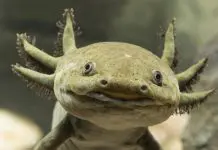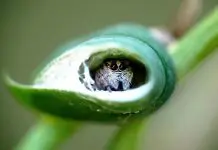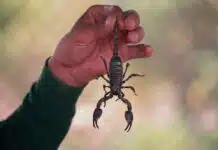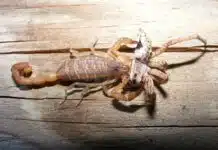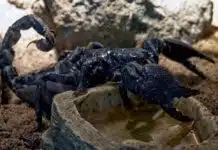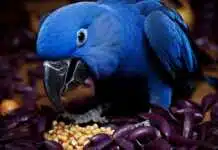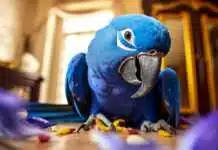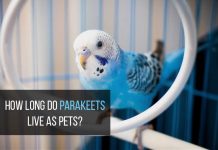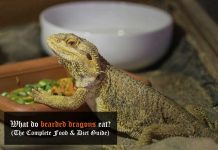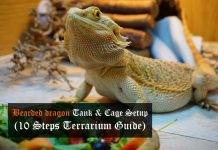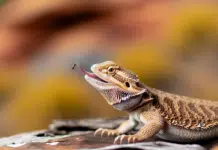Hermit crab molting is a natural process that all hermit crabs go through as they grow. It’s essentially a shedding of their exoskeleton, which provides support and protection for their body. When a hermit crab molts, it sheds its old exoskeleton and grows a new one that is larger and stronger than the previous one.
During the molting process, hermit crabs become vulnerable, and it’s essential to understand how to care for them during this period. As pet owners, we must know what to expect when our hermit crabs molt.
This knowledge will help us create a safe environment for them, which is especially crucial since molting is a stressful time for the crab. In some cases, without proper care during molting, your hermit crab could die.
The Importance of Understanding the Process for Pet Owners
Understanding the molting process can help you recognize when your hermit crab needs extra care and attention. For example, if you notice your crab hiding more often or not moving as much as usual, it could be an indication that it’s preparing to molt.
If you don’t identify these early signs and take quick action to provide the necessary care for your pet crab when it starts molting, it can lead to serious health problems or even death. Therefore, understanding the molting process can make a difference in keeping your pet healthy and alive.
Even if you haven’t noticed any signs of molt preparation yet in your crab’s behavior patterns or physical appearance-reading up on this topic is important; so that you can recognize these symptoms when they do happen in the future. Overall, caring for a pet includes knowing about its biological processes; by taking time now to learn about how a Hermit Crab Molts will allow you greater insight into what’s happening with your pet when faced with this annual event.
Explanation of the Process
During the molting process, a hermit crab will first start to absorb water to expand its body size. This helps to loosen the old exoskeleton, which will then crack open near the head.
The hermit crab will then wiggle out of the old exoskeleton backward, leaving it behind in its shell. Once out of its old shell, the hermit crab will rest while it absorbs more water to expand its new exoskeleton.
The new exoskeleton starts off soft and pliable but hardens over time as it dries out. During this time, the hermit crab is vulnerable and needs extra care until it can fully recover.
How Often Do Hermit Crabs Molt?
The frequency at which hermit crabs molt can vary depending on several factors such as age, growth rate, diet, and environment. On average, most hermit crabs molt once every 12-18 months when they are young but may decrease in frequency as they get older.
It’s important to note that some crabs may molt more frequently or less frequently than others because every individual is unique. Additionally, if a hermit crab has recently experienced stress or trauma (such as being moved into a new tank), it may trigger an unscheduled molt.
Signs That A Hermit Crab Is About To Molt
Before molting begins, there are several signs that indicate a hermit crab is preparing to molt. These include:
- Decreased appetite – Lethargy or tiredness
- Change in behavior (such as hiding more often or not moving around as much) – Cloudy eyes
It’s important to note that these signs can also indicate other issues such as illness, stress, or poor living conditions. As a general rule of thumb, if you notice any significant changes in your hermit crab’s behavior or appearance, it’s best to seek veterinary care.
Understanding the molting process is crucial for the health and well-being of pet hermit crabs. By providing a safe and comfortable environment and paying attention to their behavior, owners can ensure that their little crustacean friends have a smooth molt and recover quickly.
Preparing for Molting
Hermit crab molting is a very delicate process that requires a lot of care and attention. In order to ensure that your pet crab has the best possible chance of successfully molting, it’s important to make some preparations ahead of time. Here are some tips for preparing for your hermit crab’s molt.
Creating a Safe and Comfortable Environment
Hermit crabs need a safe and comfortable environment in order to molt successfully. The first step in preparing for your crab’s molt is to make sure that its tank is clean and free from any debris or dirt. Provide plenty of substrates (such as coconut fiber or sand) so the hermit crab can burrow down while molting.
Make sure there are several shells available in different sizes, so the hermit crab can choose one that fits comfortably after shedding its old exoskeleton. It’s essential to keep the temperature and humidity levels consistent during the whole molting period.
Consider adding a heater pad or heat lamp if you live in an area with fluctuating temperatures. Regularly checking on temperature and humidity levels could increase your chances of success, too.
Providing Extra Calcium and Protein
Molting is an energy-intensive process, requiring high levels of calcium and protein intake to help create new exoskeletons. It’s important to provide your hermit crab with extra sources of calcium- try crushed eggshells or cuttlebone- before they start their molt cycle, as it helps them store up nutrients they’ll need during the actual process.
Additionally, provide high-protein food sources like dried shrimp or mealworms so they can consume protein within their diet. It’s also beneficial to offer foods with calcium-fortified supplements like commercial pellets specifically made for crustaceans.
Removing Other Crabs from the Tank if Necessary
While many species of hermit crabs can coexist peacefully, it’s important to monitor the interactions between them. Aggressive or competitive behavior among crabs could lead to injuries or even death during molting. If you have more than one hermit crab in the same tank, consider separating them temporarily while a crab is molting.
This will help reduce any potential stress on the crab undergoing the molting process. However, if you only have one crab or more than one that regularly share shells without issues, separation may not be necessary.
Preparing for your hermit crab’s molt is an involved process that requires careful attention to detail and good planning. By creating a safe environment, providing extra calcium and protein and monitoring other crabs in the tank closely, you can help ensure that your pet has a successful molt cycle.
The Molting Process
Shedding of Exoskeleton
When a hermit crab is ready to molt, it will seek out a safe and secluded spot in its tank. It will then begin the process of shedding its old exoskeleton. This can take several hours and is an incredibly vulnerable time for the crab.
During this phase, the hermit crab is at risk of being attacked by other crabs in the tank or dying from stress. As the old exoskeleton comes off, you may notice that your hermit crab looks soft and squishy.
This is because it hasn’t yet expanded its new exoskeleton. It’s important to resist the urge to touch or handle your crab during this time as it can cause serious harm.
Absorption of Water to Expand New Exoskeleton
Once the old exoskeleton has been shed, your hermit crab will begin to absorb water to expand its new exoskeleton. This process can take several days and requires a lot of energy from your pet. During this time, it’s important to provide fresh water and food that’s rich in calcium and protein.
You may notice that your hermit crab looks larger than usual during this phase as it expands its new exoskeleton. Its coloration may also appear slightly different due to changes in pigmentation.
Length of Time It Takes for a Hermit Crab to Fully Recover
The length of time it takes for a hermit crab to fully recover from molting depends on several factors including age, size, species, and overall health. Generally speaking, younger crabs take less time to recover than older ones. After molting, your hermit crab will need extra care and attention for a few weeks while it regains its strength.
During this time, make sure you provide plenty of food and water, keep the tank clean, and monitor your pet for any signs of distress or illness. With proper care, your hermit crab should be back to its usual self in no time.
Aftercare
After a hermit crab has finished molting, it is important to provide extra care and attention to ensure its successful recovery. The molting process can be very taxing on a hermit crab’s body, and providing adequate food and water is critical.
Providing Extra Food and Water
The first thing you should do after your hermit crab has completed molting is to offer it some fresh food and water. Hermit crabs are opportunistic feeders, meaning that they will eat whatever they can find in their environment.
During the molting process, a hermit crab will often lose significant amounts of body mass, so it’s essential to provide it with some extra food to help regain the weight lost during molting. Some excellent food options for post-molt hermit crabs include fresh fruits and vegetables, high-quality pellet food, eggshells (for calcium), and mealworms or other insects (for protein).
Be sure to remove any uneaten food after several hours to prevent spoilage. It’s also crucial to provide your hermit crab with clean fresh water.
During the molting process, a hermit crab will absorb water into its exoskeleton as part of the hardening process. After the molt is complete, be sure to offer plenty of fresh water in a shallow dish or water bottle.
Monitoring for Issues or Complications
After completing molting, your hermit crab may seem lethargic or weak for several hours or even days. This behavior is normal as it takes time for their exoskeletons to harden up completely again fully. However, during this vulnerable period immediately after shedding their exoskeletons’ old ones, there is an increased risk of infection from foreign organisms entering through soft tissues before they harden up again.
Keep an eye out for signs of infection like swollen or red limbs/ joints, discoloration, unusual smells, or lethargy. If you notice any of these signs, be sure to seek immediate veterinary attention.
Returning the Hermit Crab Back to Its Tank
Once your hermit crab has fully recovered and is eating and drinking regularly again, it’s time to return it back into its tank with its companions. Note that the crab is more vulnerable after molting meaning that it can easily be preyed upon by other hermits in the tank.
Ensure that other crabs are not aggressive before reintroducing your hermit crab back into their environment. Also, avoid stressing them by keeping them in a separate container while their exoskeletons harden up completely and when acclimatizing them back into their primary tanks.
Fun Facts About Hermit Crab Molting
How much can a hermit crab grow during molting?
One of the most fascinating aspects of hermit crab molting is how much they can grow during this process. This growth can range anywhere from 15% to 25% of their current size!
That means if your hermit crab was initially the size of a ping pong ball, it could potentially grow to be as large as a golf ball after molting. This increase in size is due to the absorption of water that occurs when a hermit crab sheds its exoskeleton.
Do all species of hermit crabs molt in the same way?
No, not all species of hermit crabs molt in the same way. Some species will bury themselves completely in order to molt, while others may only partially bury themselves or molt on top of the substrate.
Additionally, some species may require different levels of humidity or temperature for successful molting. It’s important to research your specific species and their needs before attempting to assist with or observe molting.
Can molting be triggered by environmental factors?
Yes, environmental factors such as temperature and humidity can trigger molting in some cases. For example, if the temperature drops below a certain threshold or if there isn’t enough humidity in their environment, a hermit crab may feel stressed and decide it’s time to shed its exoskeleton early.
In some cases, this premature shedding could lead to health issues or even death for your pet. It’s important for pet owners to monitor and adjust environmental conditions accordingly to ensure proper and safe molting for their hermit crabs.
Molting Induces Hormonal Changes
Did you know that molting induces hormonal changes in hermit crabs? Before shedding their exoskeleton, hermit crabs will release hormones to soften their old exoskeleton and prepare for the molting process. They will also release hormones after molting to harden and stabilize their new exoskeleton.
These hormonal changes can impact a hermit crab’s behavior and mood during the molting process, so it’s important to provide a stress-free environment during this time. Giving your pet extra space and limiting interaction may help reduce stress levels.
Conclusion
Understanding the molting process is essential for any hermit crab owner. Not only does it help you prepare for and care for your crabs during this vulnerable time, but it also allows you to appreciate and marvel at this natural phenomenon. By being aware of the signs that a hermit crab is about to molt, you can provide a safe and comfortable environment that allows them to recover properly.
This includes providing extra calcium and protein, removing other crabs from the tank if necessary, and monitoring them closely during the molting process. After your hermit crab has molted, it’s important to continue providing extra food and water as they replenish their energy stores.
Keep an eye out for any issues or complications that may arise during this time, such as shell rot or difficulty walking with their new exoskeleton. In addition to its practical importance, understanding hermit crab molting can also be fascinating from a scientific perspective.
Did you know that some species of hermit crabs can grow up to three times their size during molting? Or that some crabs will actually eat their old exoskeleton for its nutrient value?
Overall, learning about hermit crab molting not only benefits your pet’s health but also enriches your experience as an owner. So take the time to observe and appreciate this incredible natural process – your hermit crabs will thank you for it!

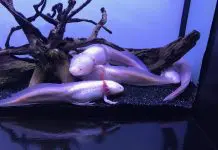

![Sick Axolotl, Fungus, Stress Symptoms [Axolotl Illness Guide 2025] Axolotl fungus](https://exopetguides.com/wp-content/uploads/2018/06/axolotl-218x150.jpg.webp)
